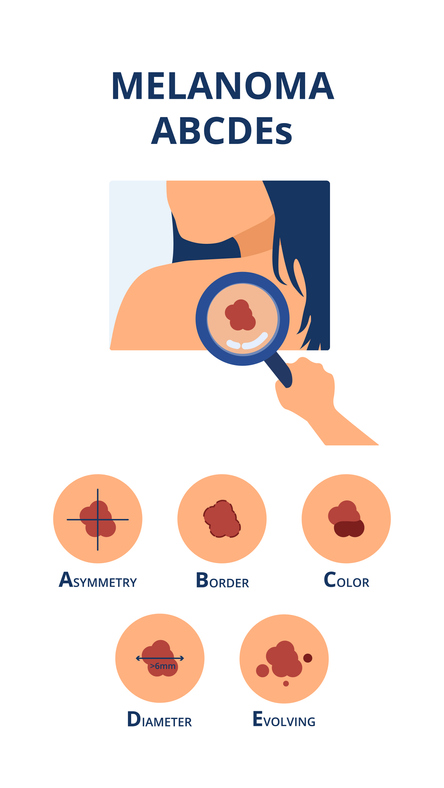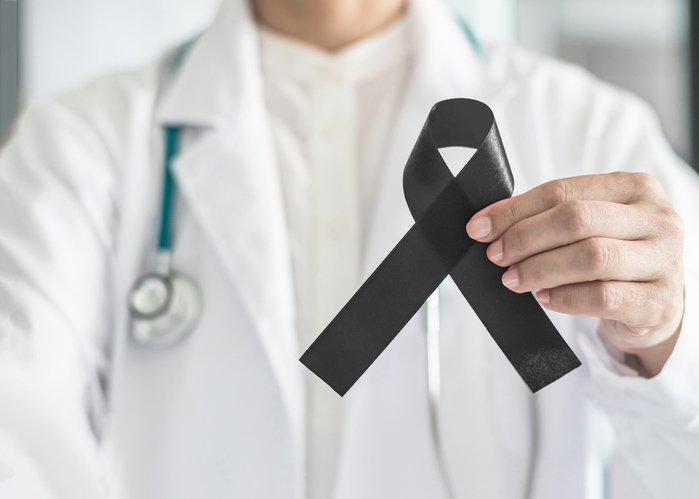Signs of Skin Cancer: Learn to Spot These Red Flags
Signs of Skin Cancer
Learn to Spot These Red Flags
The American Academy of Dermatology estimates that 9,500 people in the U.S. are diagnosed with skin cancer EVERY day. As the most common type of cancer in the country, it impacts the lives of one in five Americans. However, there are some warning signs that can signal if you are one of these people. While these are startling statistics, they aren’t meant to fill you with fear. We share them to encourage you to take your skin health seriously. When you know which early issues to watch for, you can be proactive in protecting your skin and your health. Today, we’re sharing key signs of skin cancer you should watch for, including some that are easy to miss. If you notice any of these red flags, consider booking an appointment with your dermatologist to explore them further.
How to Know if You Have Skin Cancer
For most people, the first sign of skin cancer isn’t pain or illness. Some people simply notice a strange-looking spot on their skin or a streak beneath their nail. While some of those spots can bleed, itch, or become irritated, this isn’t always the case. If you notice a spot that looks suspicious, the best thing to do is visit a trusted dermatologist. They will examine the spot and may perform a biopsy if they want to get a closer look. This means they’ll remove all or a portion of the spot, along with some of the surrounding skin. A biopsy is the only way to know for sure if a spot is cancerous or not. Most of the time, it can be performed right in the office. Once your dermatologist has taken the skin sample, they can evaluate it under a special microscope. During the evaluation, your doctor will look for skin cancer cells. If they find any, they will provide a report that clearly lists the type of cancer cells present. Your dermatologist will give you a biopsy report, even if they do not find any signs of skin cancer.
What Does Skin Cancer Look Like?
There isn’t one characteristic that defines all types of skin cancer. It can occur in many different shapes and sizes, as well as on any part of the body. That is what can make this condition so difficult to identify. Skin cancer will look differently on each person depending on their:
- Skin tone, which impacts the coloration and visibility of cancerous spots. People with lighter skin tones are able to notice new bumps or moles easier than people with darker skin tones.
- The location of the cancer on your body, as different parts can produce different pigmentations. Different locations on the body also receive more sun than others, so places like arms and legs may have more prominent signs of skin cancer than other regions.
- The type of skin cancer you have, which we’ve detailed in the below sections.
Skin cancer often develops on parts of the body that are regularly exposed to the sun. These areas may include the scalp, ears, lips, chest, and arms. However, it can form anywhere – including your palms, toenails, and genital region.
Can Moles and Spots Be Skin Cancer?
When you see a mole or spot on your skin, they’re usually harmless. However, you can always tell your dermatologist if they appear to look dark brown, black or in any way unusual. Some moles might look atypical, but they aren’t cause for concern. Yet, if you have one that seems to be growing, changing rapidly, or not going away, these could be indications of skin cancer. If the mole is bleeding, this could signal that advanced skin cancer has formed.
There are three main types of skin cancer you should be aware of. These include:

Signs of Melanoma
Of the three types of skin cancer, melanoma is the most serious. This type of cancer develops in our melanin-producing cells, which provide the pigment that colors our skin. Melanoma usually occurs on the skin, but it can also form in less common areas such as the eyes or internal organs. For example, it can develop inside your body (such as your throat). There are a few main signs of melanoma to know. It’s helpful to remember them by the ABCDE acronym. This stands for:
- Asymmetric: The shape on one side does not look like the other.
- Border: The edges are uneven, blurry, ragged or notched.
- Color: There are areas of discoloration, such as black, brown or tan sections. You may also see areas of gray, white, blue or red.
- Diameter: The mole is larger than 6 millimeters (about the size of a pencil eraser) or is growing increasingly larger in size.
- Evolving: The mole continues to change in shape, size, color or appearance. Or it might be growing in a new area of skin that was previously normal.
Melanoma can also develop within an existing mole. When this happens, you might notice that the original mole has changed shape or texture. For instance, it might become lumpy or hard. Over time, the mole may start to feel differently, though it isn’t typically painful. Instead, you might notice irritation at first. For example, the mole might itch, bleed or ooze.
Contact Us
Signs of Basal Cell Carcinoma
Basal cell carcinoma tends to develop on the outermost layers of the skin. This is a slow-growing type of cancer that can take a few different forms – typically as a transparent or skin-colored bump on the skin. It can also appear as a brown or blue lesion as well as a white, scar-like spot. You may also notice a flat, scaly patch on your skin, usually surrounded by a raised edge.
Other potential forms of basal cell carcinoma include:
- A pearly, white bump
- A blue or black lesion
- A pink lesion with an indented center
- A dry red or brown patch (looks similar to eczema)
- A distinctly pigmented area with a raised border
- A sore that repeatedly bleeds, oozes or scabs over, but doesn’t fully heal
Signs of Squamous Cell Carcinoma
This type of cancer forms when the squamous cells in the top layer of your skin start to grow erratically. Typically, squamous cell carcinoma will appear as a red, dry patch of skin. It may slowly get bigger in size or turn into a tender sore. It may also itch or burn. Squamous cell carcinoma is usually rougher and redder in tone. It may appear as a dry, scaly area or as an open sore. Sometimes, brown spots on the skin that look like age spots also contain squamous cell carcinoma cells. You may also notice a curved red bump or a crusty growth that resembles a small wart.
Seeking Diagnosis & Care for Skin Cancer
Receiving a skin cancer diagnosis isn’t easy. While the ABCDE acronym can help you spot signs of melanoma, being aware of which kinds of skin cancer spots are associated with basal cell carcinoma and squamous cell carcinoma can also help you seek care quickly. The earlier you identify skin cancer, the better the outcome can be – which is why understanding signs of skin cancer could save your life. This way, you can diagnose cancerous moles and spots as soon as they appear and seek professional care.





Comments